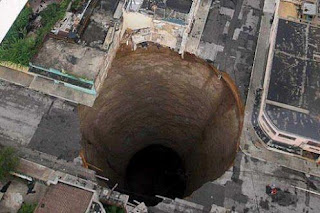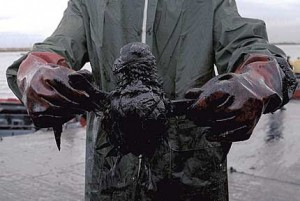Water pollution is becoming a huge problem which is faced by all of the human existence and as well as by every wild life species. According to present scales for pollution of water, 10 to 15 billion pounds full of waste materials like garbage is threw in different seas and rivers of the entire world. Not only had this, now, as per the latest records for water pollution in India; had 20 billion gallons of drinking water pollution also dumped in running rivers and seas. Water pollution is associated with the contamination of water bodies like lake, river, ocean and groundwater. It occurs when various pollutants are discharged directly or indirectly in water bodies without adequate treatment of the harmful waste substance or without the removal of harmful waste compounds. Water is typically referred to as polluted when it is impaired by anthropogenic contaminants and either does not support a human use or undergoes a marked shift in its ability to support its constituent biotic communities, such as fish.
| | |
|  | |
| | |
A small quantity of a toxic chemical may have little impact if it is spilled into the ocean from a ship. But the same amount of the same chemical can have a much bigger impact pumped into a lake or river, where there is less clean water to disperse it. Surface water and groundwater have often been studied and managed as separate resources, although they are interrelated. Sources of surface water pollution are generally grouped into two categories based on their origin. They are i) point- source and ii) non- point source. Point source pollution refers to contaminants that enter a waterway through a discrete conveyance, such as a pipe or ditch. It mainly includes waste coming out from factories, industries, sewage treatment and city drains. Non- point source pollution refers to diffuse contamination that does not originate from single discrete sources. NPS pollution is often the cumulative effect of small amounts of contaminants gathered from a large area. The leaching out of nitrogen compounds from agricultural land which has been fertilized is a typical example.
Water pollution is caused mainly by toxic pollutants, organic substances (entry of manure and sewage), and use of pesticides, insecticides and fertilizers in agriculture, allowing cattle to graze near waterways often results in washing away of organic ways, it can be contaminated by radioactive waste material, improper disposal of hazardous chemicals drain toxic chemicals into water bodies, mild acid and bases also contribute in water pollution. Pathogens also enter in water bodies and contaminate it. Organic compounds such as volatile organic compounds, detergents, food processing waste, petroleum and hydrocarbons also severely affect the environment. Inorganic compounds include acidity, ammonia and chemical waste and heavy metals such as lead etc.
DO YOU KNOW>Water pollution has been suggested that it is the leading worldwide cause of deaths and diseases, and that it accounts for the deaths of more than 14,000 people daily. An estimated 700 million Indians have no access to a proper toilet, and 1,000 Indian children die of diarrheal sickness every day. Some 90% of China's cities suffer from some degree of water pollution, and nearly 500 million people lack access to safe drinking water. In addition to the acute problems of water pollution in developing countries, industrialized countries continue to struggle with pollution problems as well. In the most recent national report on water quality in the United States, 45 percent of assessed stream miles, 47 percent of assessed lake acres, and 32 percent of assessed bay and estuarine square miles were classified as polluted.
| | |
|  | |
| | |
Water pollution has become indispensible part of our life and we can find its presence everywhere. It has many devastating effects on aquatic as well as on human life. It leads to eutrophication due to which marine life is severely affected. A number of waterborne diseases are produced by the pathogens present in polluted water, affecting humans and animals alike such as cholera or typhoid. Pollution affects the chemistry of water. The pollutants, including toxic chemicals, can alter the acidity, conductivity and temperature of water. As per the records, about 14000 people perish or incur various communicable diseases due to the consumption of contaminated drinking water. The concentration of bacteria and viruses in polluted water causes increase in solids suspended in the water body, which, in turn, leads to health problems. Marine life becomes deteriorated due to water pollution. Lethal killing of fish and aquatic plants in rivers, oceans and seas is an after effect of water contamination only. Diseases affecting the heart, poor circulation of blood and the nervous system and ailments like skin lesion, cholera and diarrhoea are often linked to the harmful effects of water pollution. Carcinogenic pollutants found in polluted water might cause cancer. Alteration in the chromosomal makeup of the future generation is foreseen, as a result of water pollution. Discharges from power stations reduce the availability of oxygen in the water body, in which they are dumped. The flora and fauna of rivers, sea and oceans is adversely affected by water pollution.
| | |
|  | |
| | |
There are several steps that can be taken to help prevent water pollution from getting worse.
- Water pollution can be prevented by conservation of soil as soil erosion is one of the biggest causes of water pollution today. When we take initiative to conserve soil, we also conserve water and water life. Planting vegetative covers, strict erosion management and implementing beneficial farming methods are just a few of the many possible approaches to soil conservation.
- Utilization of a green infrastructure approach to improve stormwater management capacity throughout the system, and reduce the hydraulic overloading of the treatment plant is an effective way to conserve water.
- Repairing and replacement of leaking and malfunctioning equipment should be done to ensure proper working of machines up to their potential.
- Toxic chemicals should be properly disposed and there should be minimum use of volatile organic compounds (VOC).
- Minimal use of plastics should be done in order to prevent fresh extraction and mining.
- Awareness should be spread among the common people so that they can come forward to reduce water pollution.
- Limited use of fertilizers, pesticides and insecticides should be there in order to reduce the concentration of harmful pollutants in water sources.
- Industrial waste should be treated properly before it is discharged to the water bodies.
These steps may not look so effective but when a millions of people develop into a concerned citizen then surely they would be able to achieve control over water pollution.
























